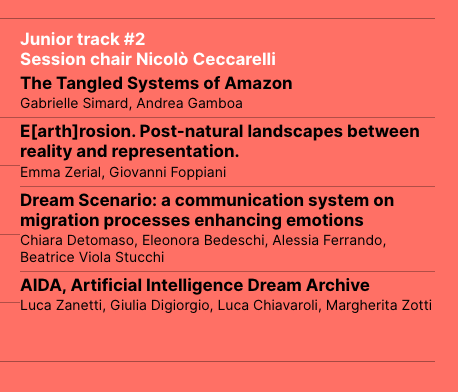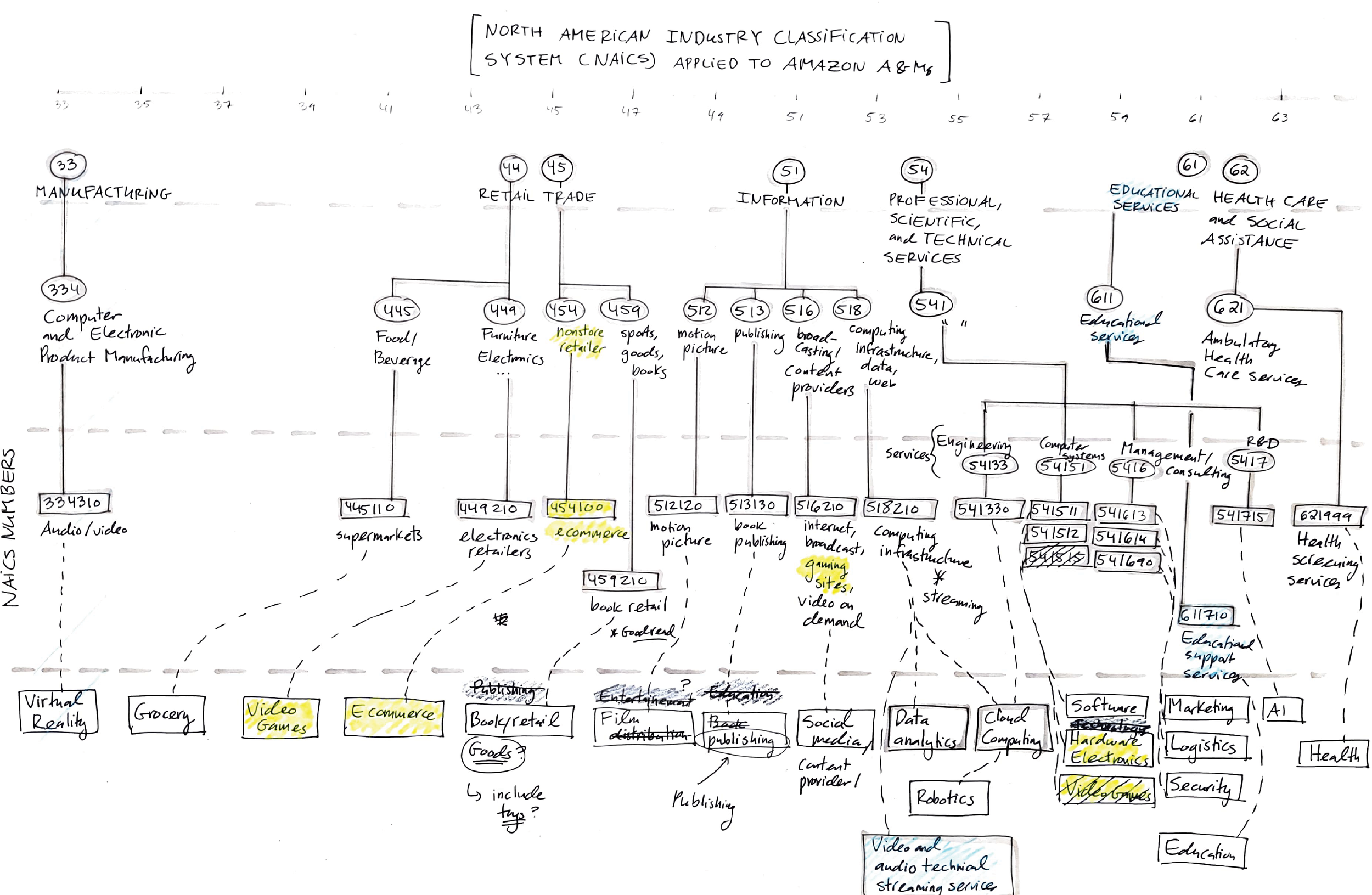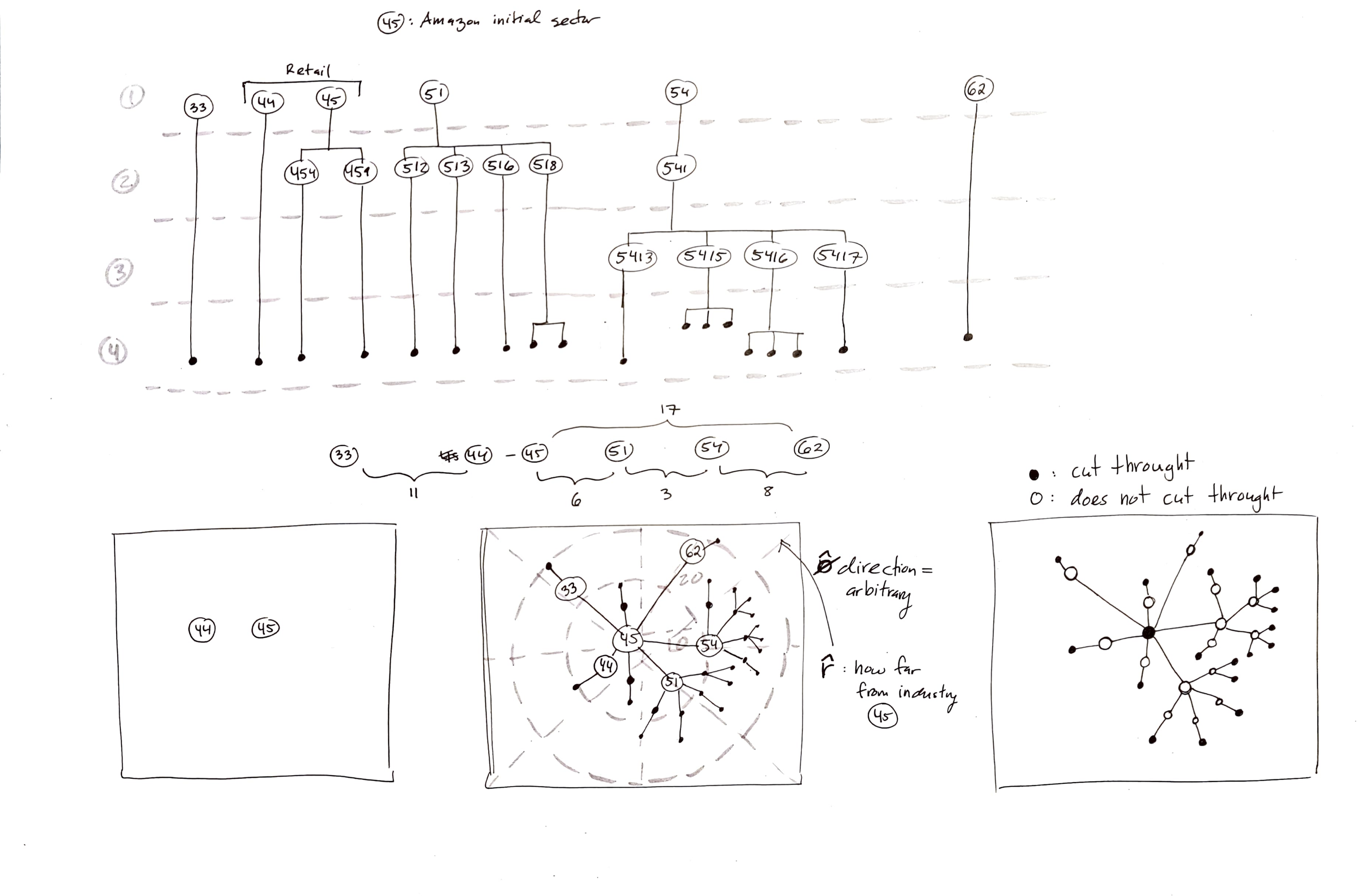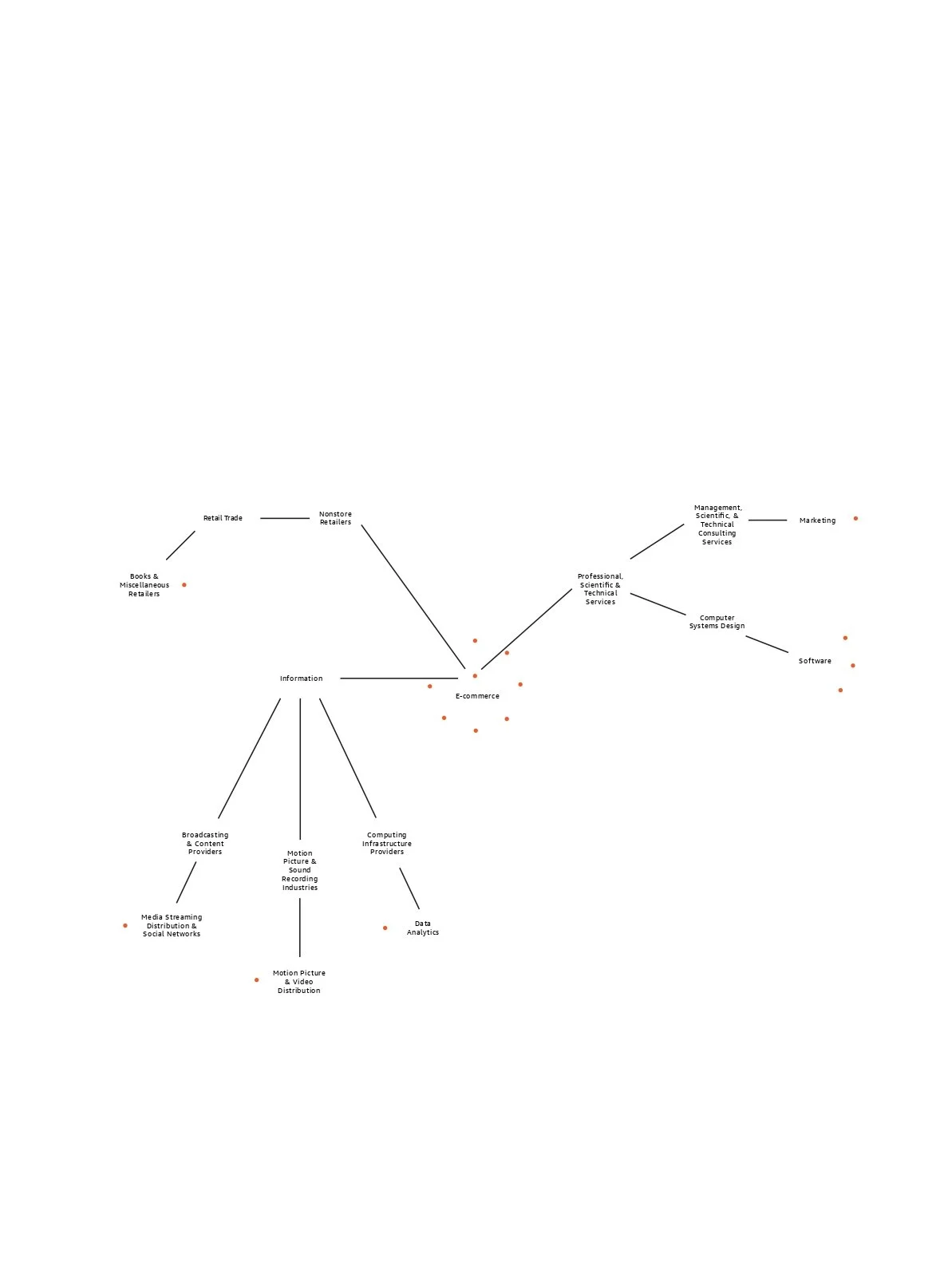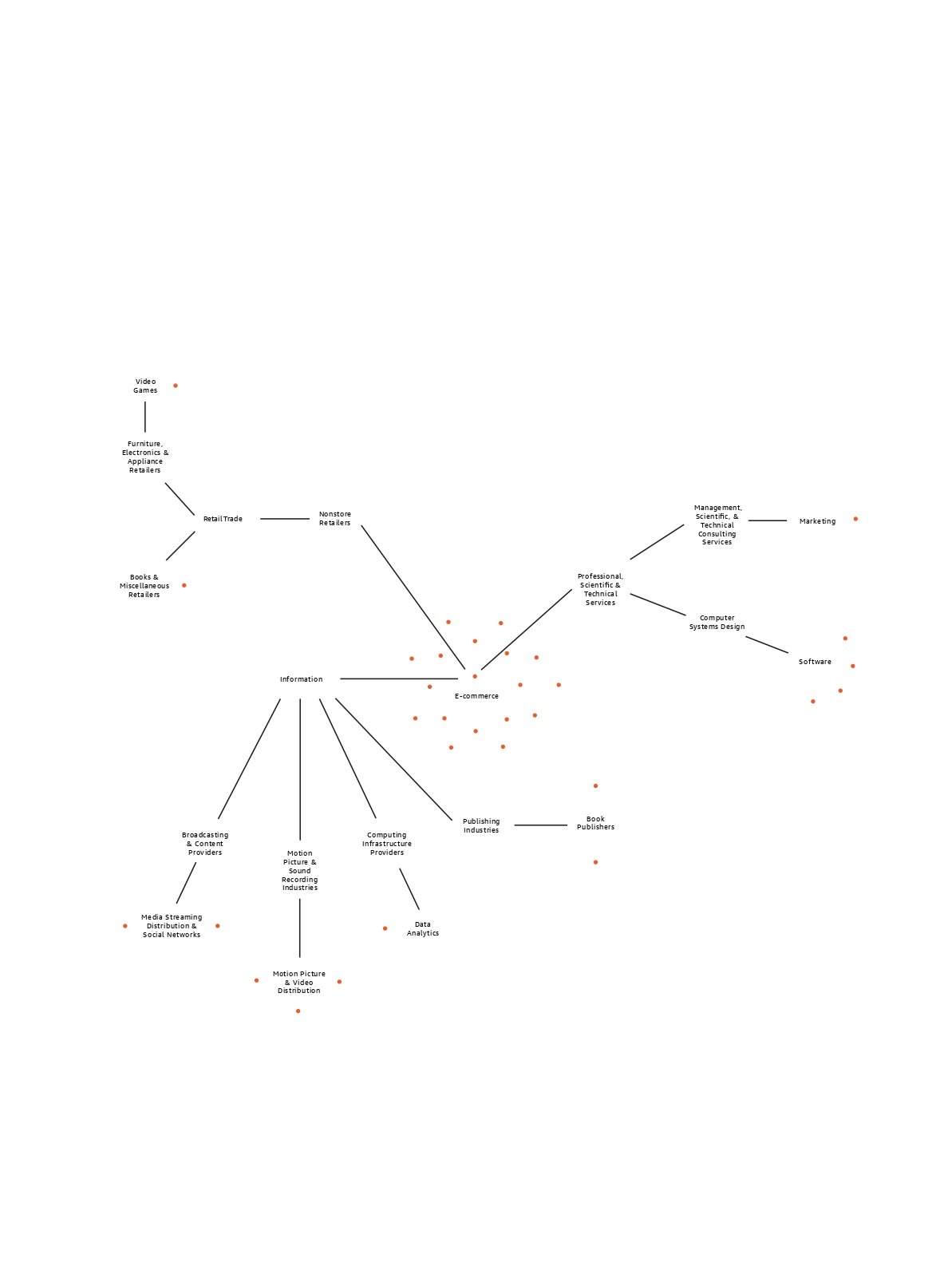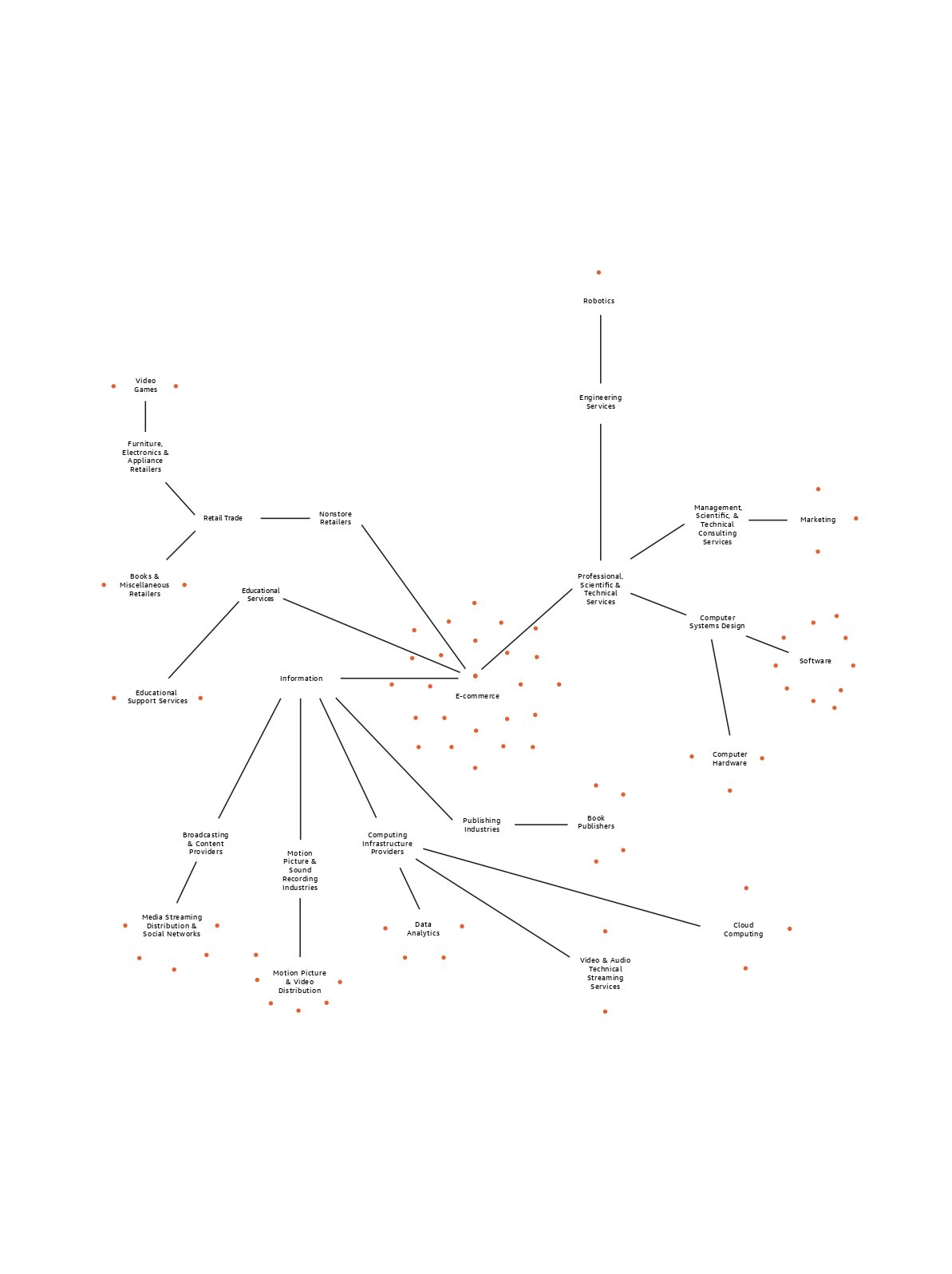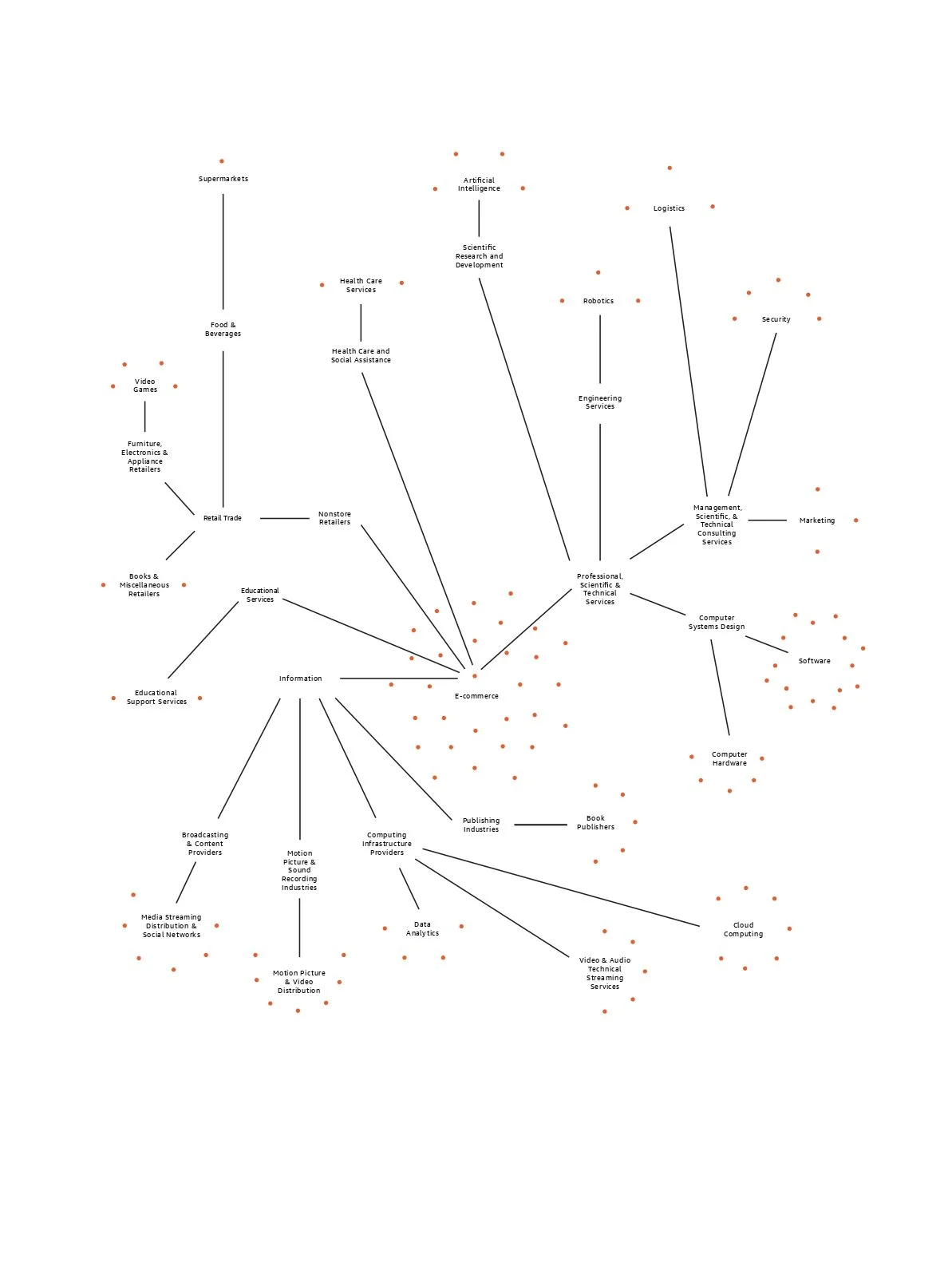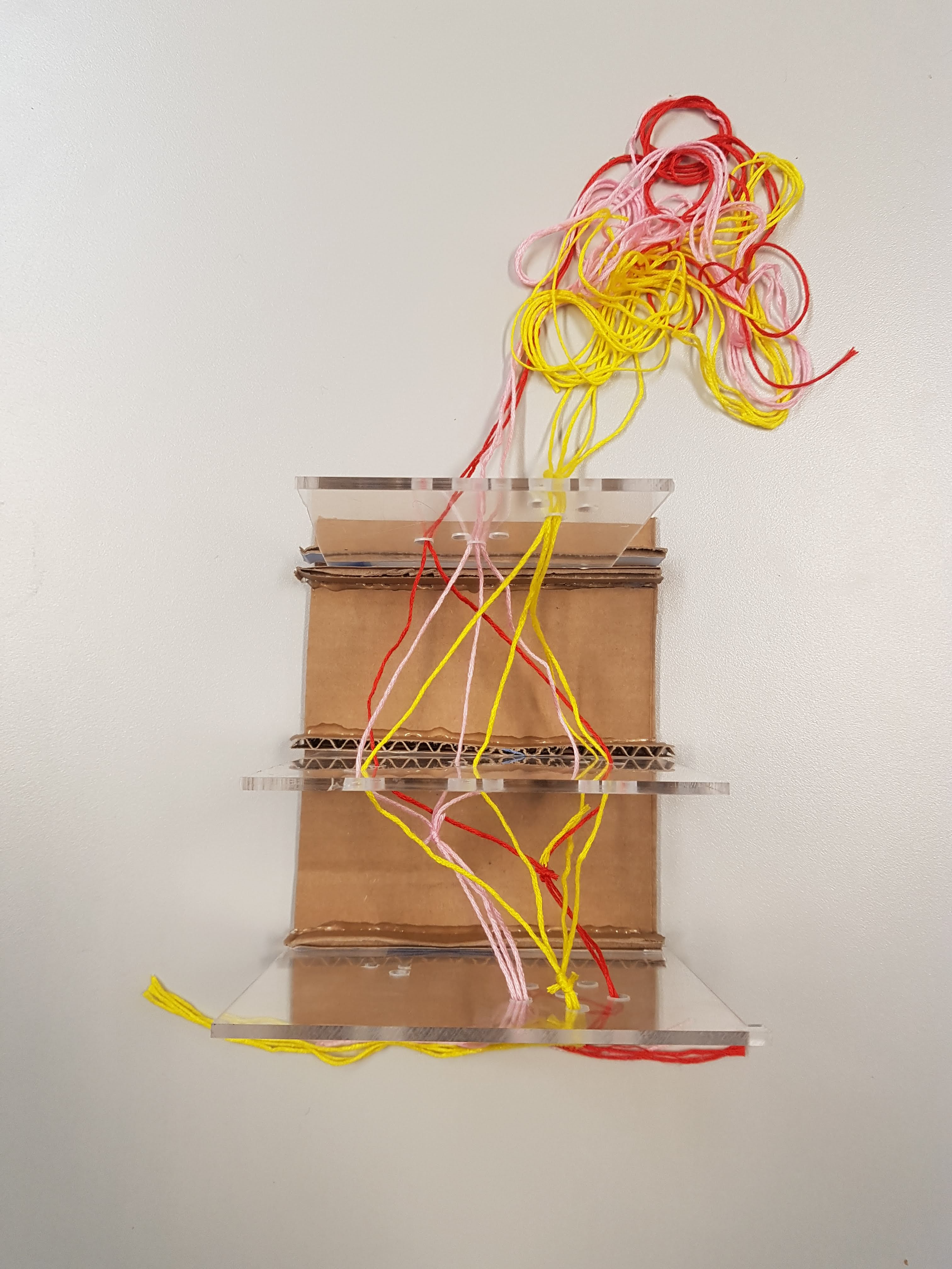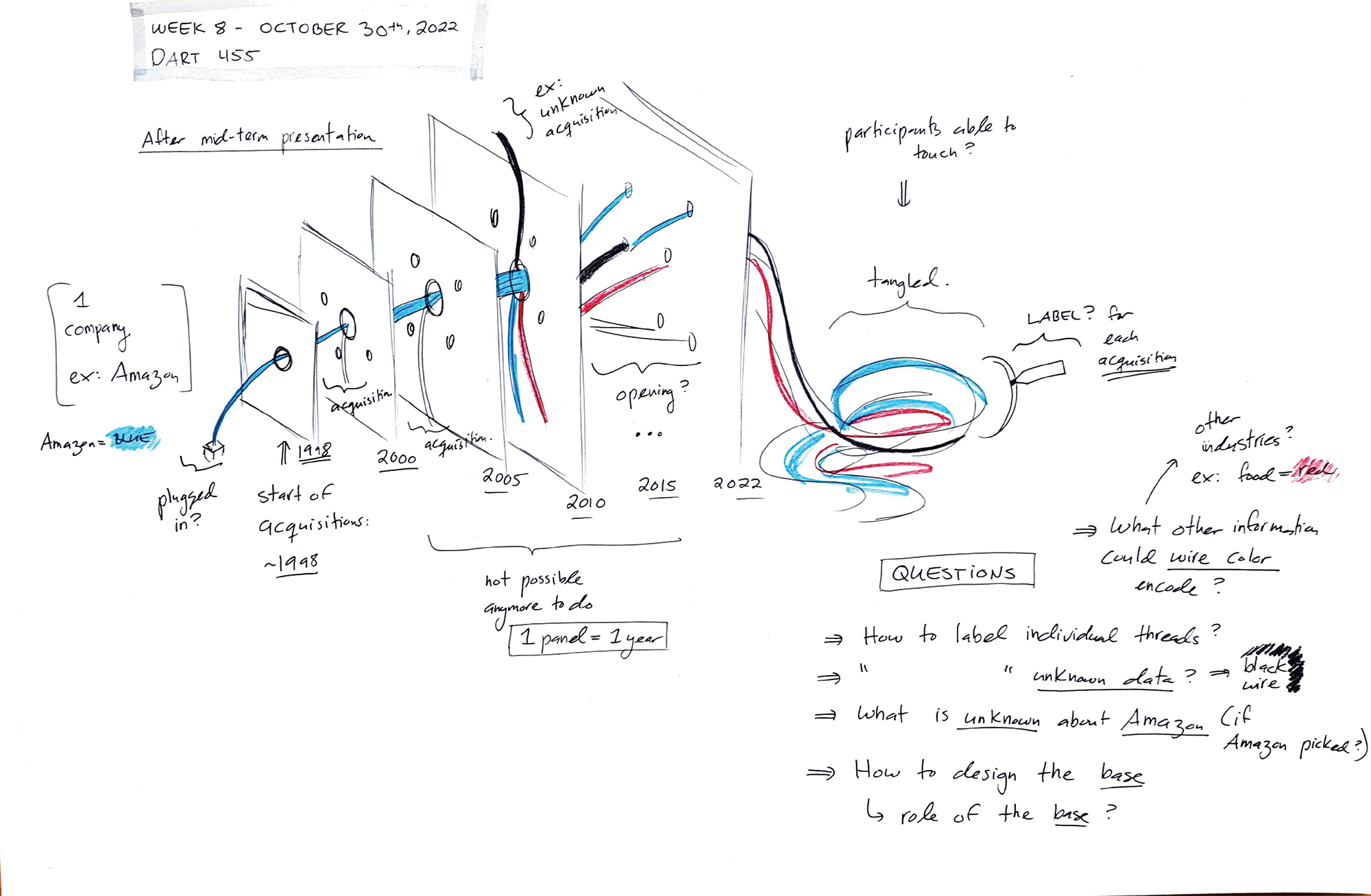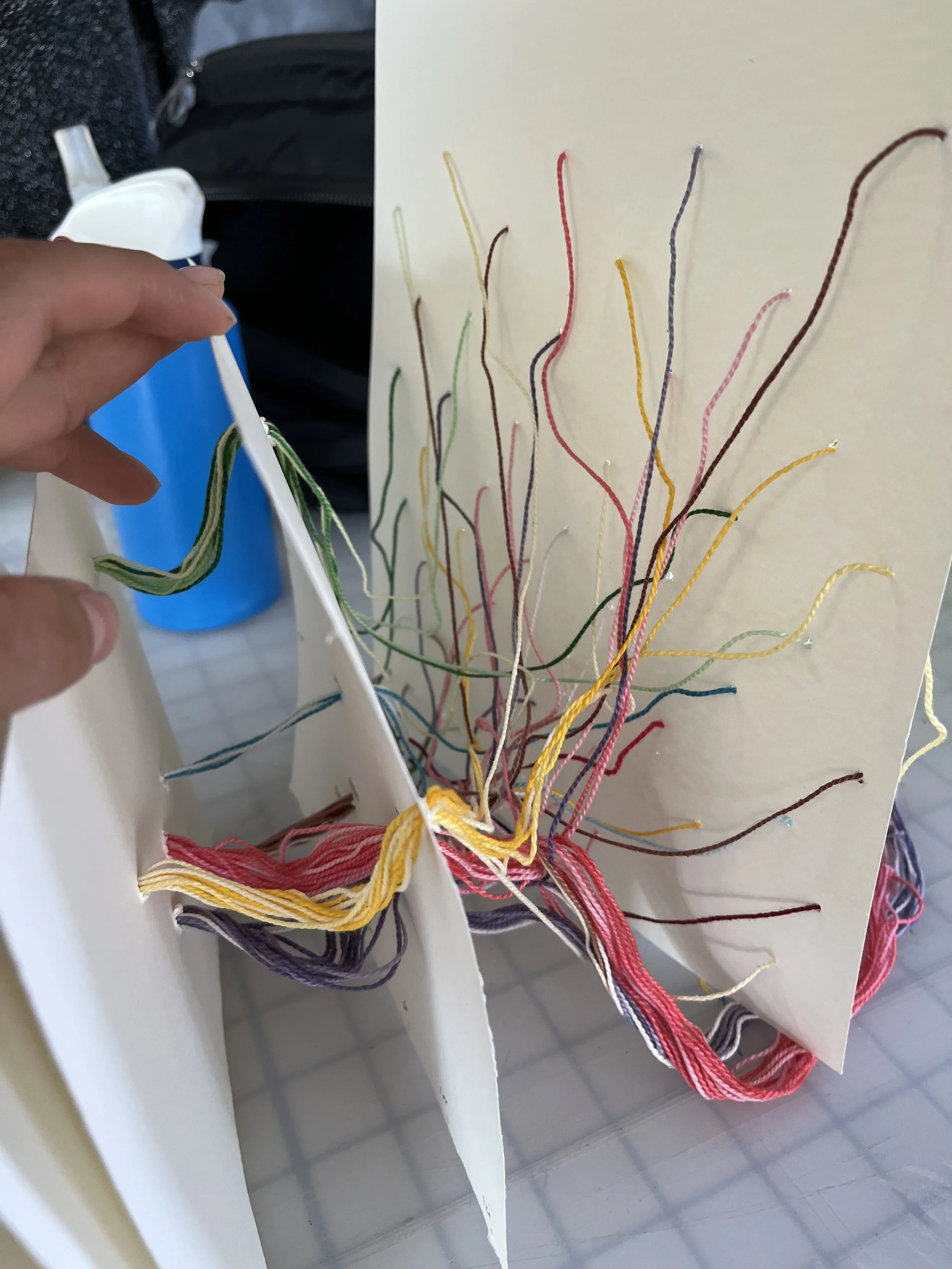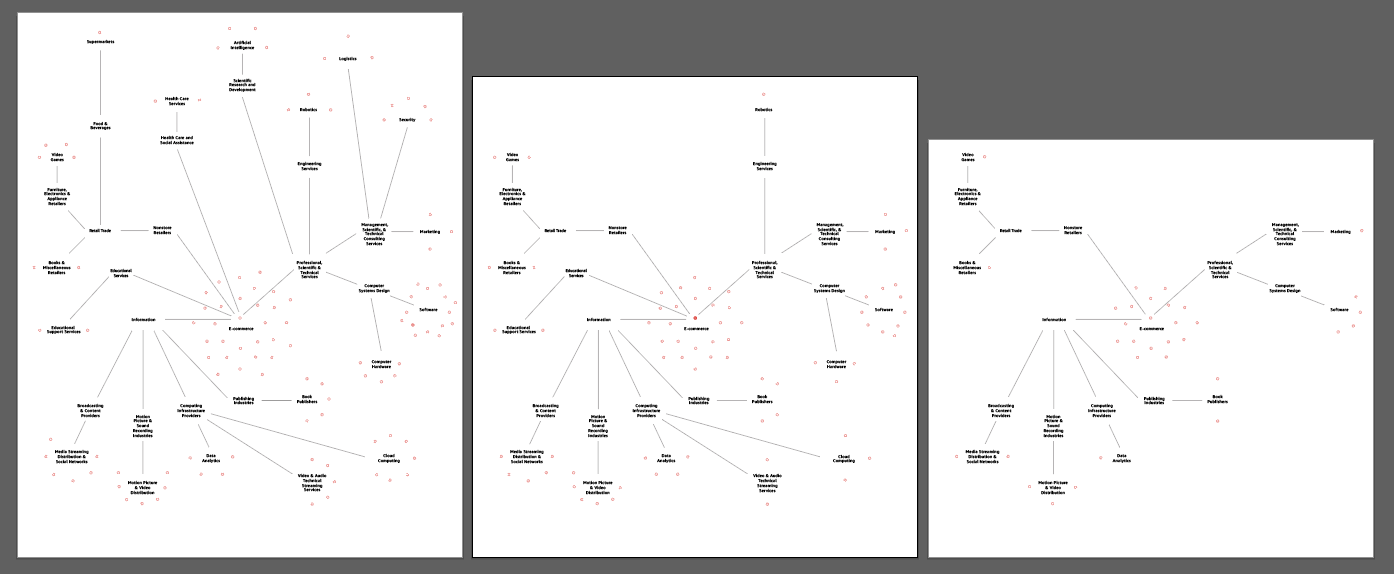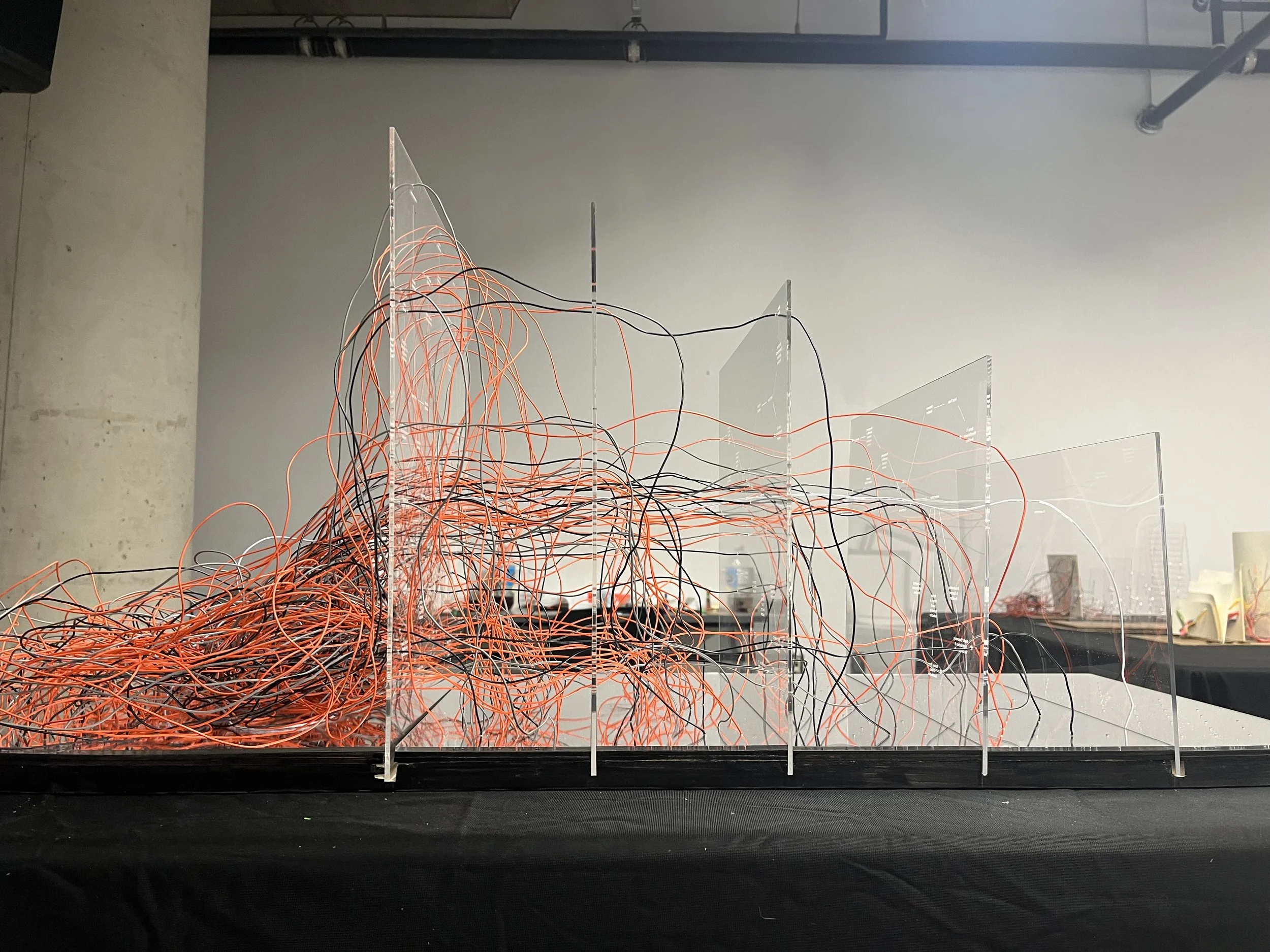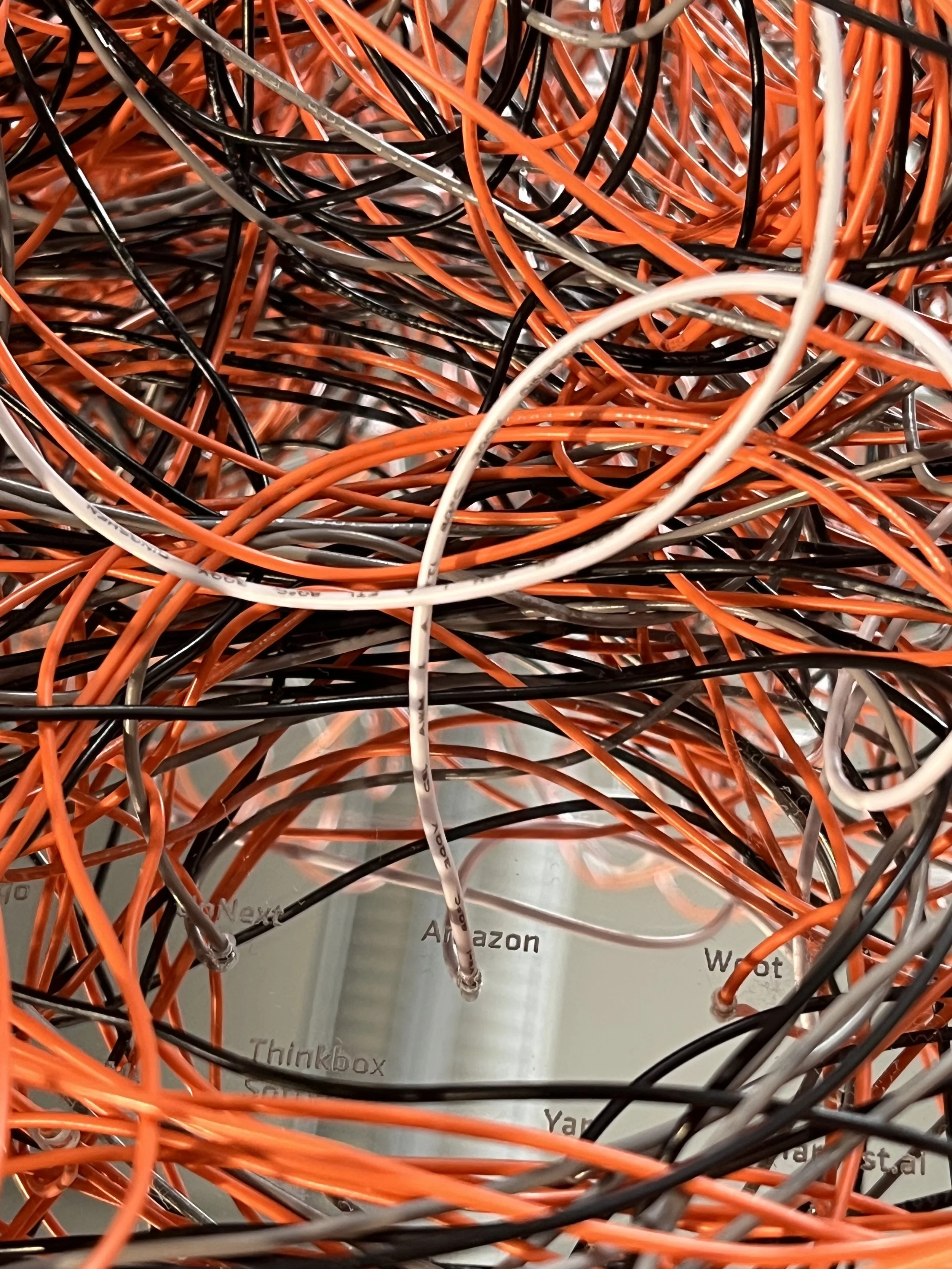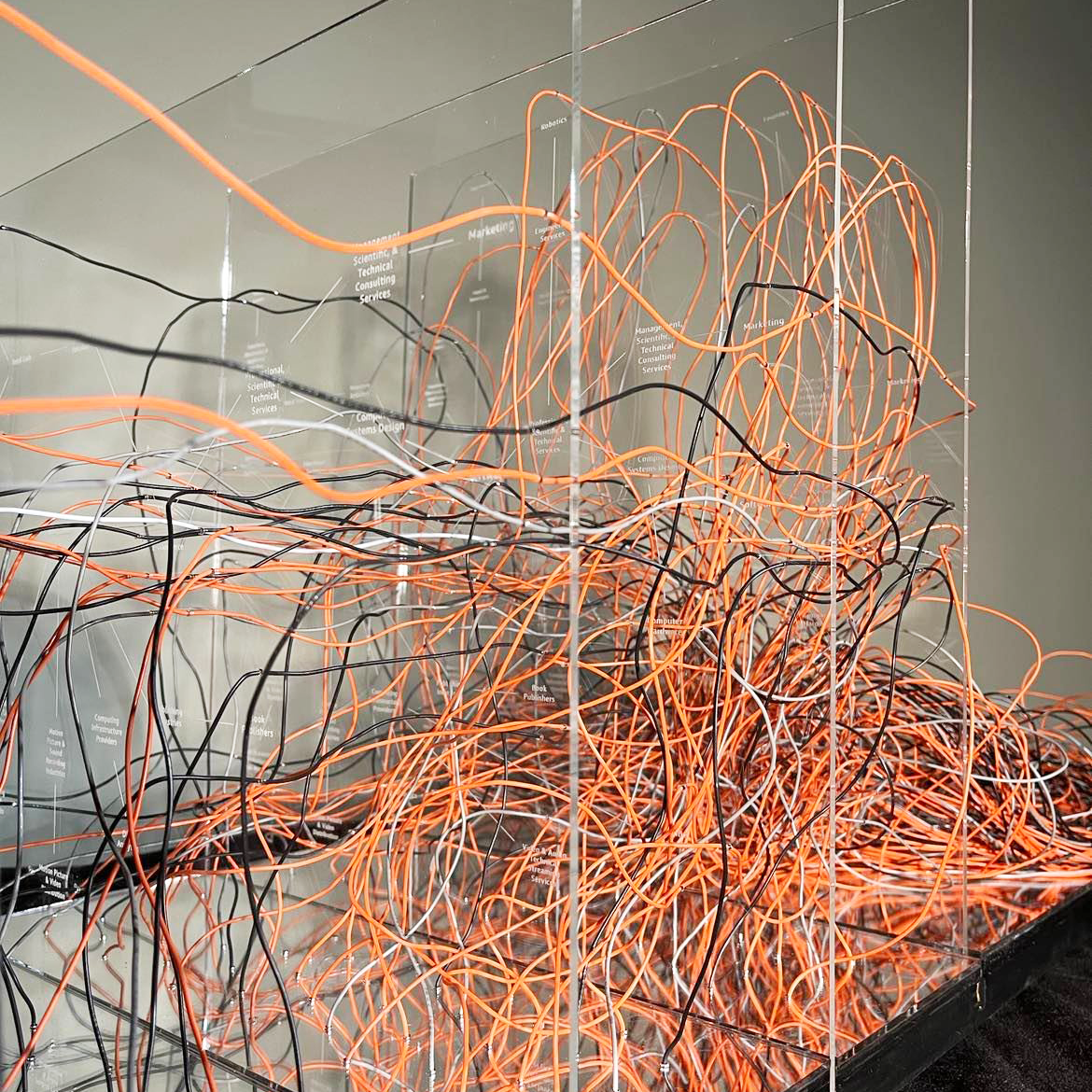
Showcased at 2CO Conference 2024
*
Showcased at 2CO Conference 2024 *
The project was featured at the 2CO Conference in Spain in 2024, a prominent event dedicated to exploring the interdisciplinary challenges faced by the global design community. The 2CO Conference brings together professionals and researchers from diverse fields to address the pressing task of making our world more accessible through thoughtful and innovative design.
Lead Researcher & Designer
Role
Duration
Sep. 2022 - Nov. 2022
Tools
InDesign, Illustrator, Laser Cut
Team
Gabrielle Simard
Sculpting Amazon's impact through data
This project explored the intersection of data and art, with a focus on the concept of data physicalization. Through both theoretical exploration and practical application, the sculpture involved an in-depth study of the various techniques, tools, and technologies used to represent data in physical form.
Keeping in mind the ethical and social implications of data representation, this project took into consideration how data can be used to promote positive change in society. Through a process of experimentation and prototyping, we explored how physical data representations can be exhibited and experienced in different contexts, and how they can be effectively communicated to diverse audiences.
Duties
Researching and consolidating information by gathering and organizing relevant data to inform the creative process.
Sourcing materials and evaluating their materiality to ensure they are suitable for the project’s technical and aesthetic requirements.
Prototyping concepts by creating preliminary models and designs to test the feasibility and effectiveness of different approaches.
Assembling the final piece by putting together all of the elements created during the creative process to produce a finished artwork.
This project received Concordia's Design Art Research 2023 Award
*
This project received Concordia's Design Art Research 2023 Award
*
This project received Concordia's Design Art Research 2023 Award * This project received Concordia's Design Art Research 2023 Award *
At the outset of our project, we were interested in exploring the societal impact of megacorporations. We were drawn to the idea of investigating the ways in which these companies, with their vast resources and influence, shape our culture, politics, and economy.
As we began our research, we quickly realized the immense scope of this topic, and we decided to focus our attention on a single megacorporation: Amazon. In particular, our research focused on Amazon’s acquisitions and mergers, and the many industry sectors into which the company has expanded. We were interested in tracing the trajectory of Amazon’s growth over time, and in examining the ways in which the company’s expanding reach has impacted various sectors of the economy. As we worked to consolidate this vast and complex data, we were struck by the immense scale of Amazon’s operations, and by the many ways in which the company is reshaping our world.
Tangled Systems
Goals
01.
Engage with a critical art and design practice that builds on the relationship between data and public interest.
02.
Prompt thoughtful reflection into the power dynamics and the ways in which these corporations shape our world.
credit: Gabrielle Simard
The Research
In order to organize the vast amount of data we had collected on Amazon’s acquisitions and mergers, we turned to the North American Industry Classification System (NAICS). This system provides a standardized way of categorizing businesses and industries, and allowed us to sort Amazon’s various acquisitions into their respective sectors.
However, we quickly discovered that this was no easy task. The information we needed was often hidden or difficult to find, and we had to rely on a variety of sources to piece together a comprehensive picture of Amazon’s operations and create our own dataset. By taking on this challenging and often frustrating task, we were able to shine a light on the opaque and sometimes inscrutable world of corporate operations, and to create an artwork that encouraged viewers to think critically about the role of corporations in society.
credit: Gabrielle Simard
From 1994 to 2022, Amazon underwent a total of 114 acquisitions and mergers
The Prototypes
In creating our final sculpture design, we placed great emphasis on prototyping and iterating the concept. This iterative process enabled us to test various materials and explore how they interacted with one another, as well as assess what would be most visually impactful for the audience. Throughout the prototyping process, we also sought to refine the message and story behind our dataset. By embracing this iterative approach, we were able to push the boundaries of what we originally thought possible and create a truly unique and compelling artwork.
Prototype 01
-
Discussing how to translate data into tangible components
Cutting and gluing together a base to hold up acrylic sheets
Threading embroidery floss through holes
Combination of unraveled and condensed threads
-
Embroidery thread too soft and flexible, hard to manipulate
credit: Gabrielle Simard
Prototype 02
-
Research corporation’s net income, revenue from 2018-2021
Use acquisitions number to create colored “bundles” for each company
Organize and figure out how to plot data on paper
Thread bundles through respective holes
Unravel bundles at the end
-
Extremely time consuming and tidious
Prototype 03
-
Create base for acrylic panels
Cut and bundle cords by company’s data
Thread bundles through respective holes
Making scatter plots of net income (X) vs revenue (Y) per year for all firms
Each point associated with hole size corresponding to # of acquisitions
-
Approximations needed to be made
Holes were too big to be placed exactly where they should
The Process
We meticulously organized and consolidated numerous mergers and acquisitions into various industry sectors. This process involved digitizing the data and sending it out to be laser-cut into acrylic panels. The assembly of the sculpture was the final step in the process, and it was just as overwhelming and hard to work with as the discovery of the complex dataset. We approached the project with both curiosity and apprehension, knowing the scale and complexity of the subject matter.
The Final Design
“The Tangled Systems of Amazon” is a thought-provoking art piece that explores the intricate nature of Amazon’s corporate structure. The artwork takes the form of an expressive object that beckons the viewer to step closer and examine the subtle nuances of Amazon’s numerous acquisitions and mergers.
As time passes, the artwork highlights the increasing lack of transparency that arises from Amazon’s ever-expanding presence in various industry sectors through the colourful threads. The object’s intricate details and hidden elements symbolize the complexity of Amazon’s business model, leaving the viewer with a sense of both wonder and unease. “The Tangled Systems of Amazon” invites us to contemplate the consequences of such a vast and powerful conglomerate, urging us to consider the implications for the future of commerce and society as a whole.
Challenges
Data was hard to find, missing and scattered throughout different sources.
Amount of information of dataset throughout the years was overwhelming and we were unsure how to represent it.
Solutions
Deep research to create our own dataset for Amazon’s acquisitions and mergers throughout the years.
Based on feedback and trial and error, information was conveyed through colours, materiality and user exploration.
From 1994 to 2022, Amazon underwent a total of 114 acquisitions and mergers, each of which is represented by a thread. Through the tangled mess, a single white thread is constant, representing Amazon, while orange threads represent companies that have merged into Amazon. Grey threads are used to represent independent companies such as Twitch and Wholefoods that exist outside of Amazon, and black threads represent companies that are no longer operational.
Full process book can be found here
Takeaways
During my process for this class, these lessons have impacted the way I approach my design practice.
By combining traditional techniques with digital tools, I was able to create more complex and nuanced designs that would be difficult to achieve using just one approach. Ideas were started on paper, then move to a digital platform like Adobe Illustrator to refine and develop my ideas further. By combining the best of both worlds, I am able to create more compelling and innovative designs that connect with audiences on a deeper level.
Analog vs Digital
Research was a critical component of my design practice because it allowed me to gain a deeper understanding of the problem I was trying to solve and the context in which I was working. By conducting research, I was able to gather insights and data that informed my design decisions and helped me create more effective and relevant solutions. Ultimately, research enabled me to approach a problem with a more informed and strategic perspective.

